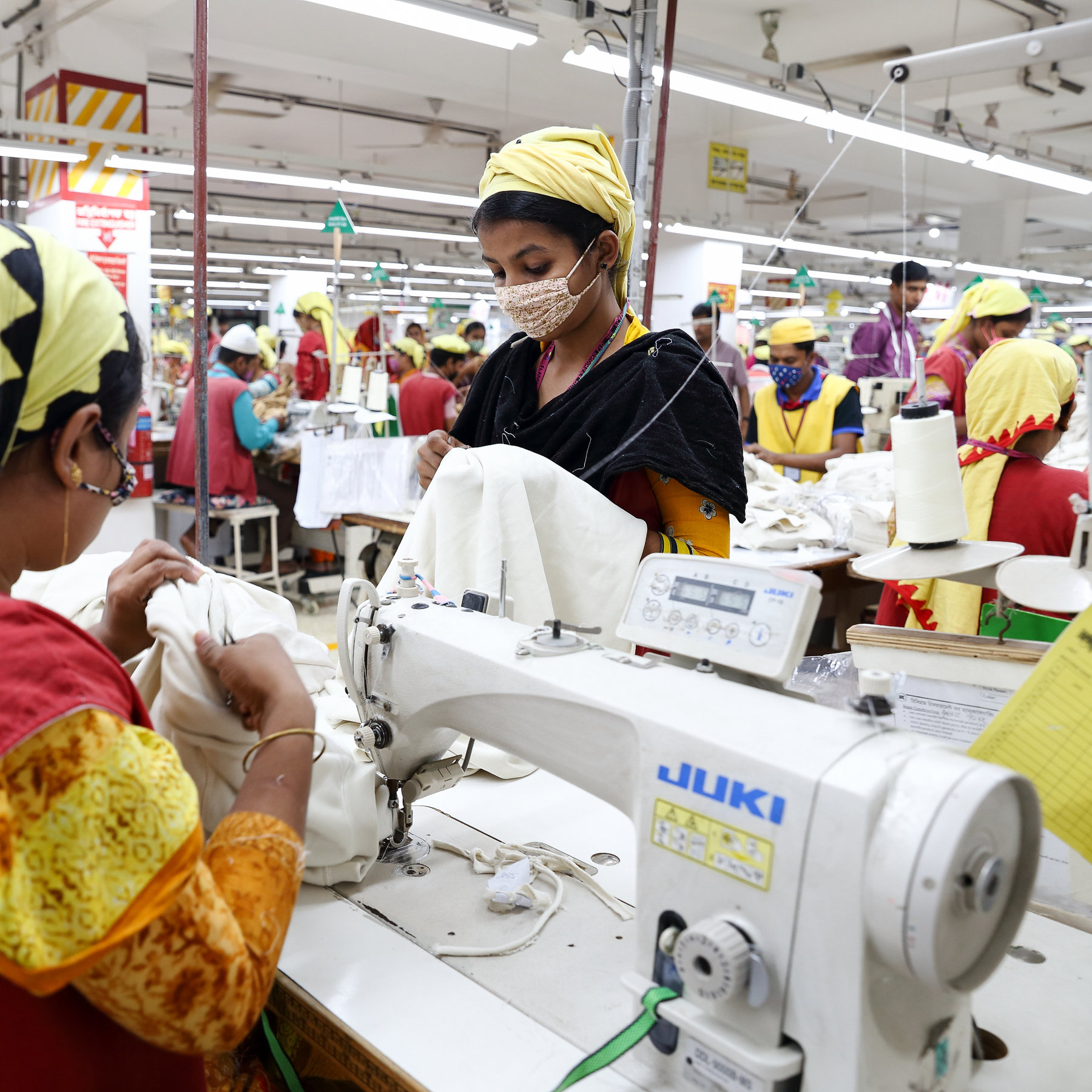The coronavirus pandemic has taken a toll on the entire world and is jeopardising the world economy in irreparable trajectories. Moreover, it is wreaking havoc on the biggest exporters of garments in the world.
The global supply chain network pulled out a huge chunk of Asian natives from the vicious circle of poverty throughout these years. It enabled people to not just earn the daily bread but to enjoy a proper meal. The job of garment manufacturing was the sole source of income for multiple families residing in the region. However, the global apparel industry stands at stakes today. The pandemic which has disrupted the entire apparel and textile ecosystem has cast a dark shadow on the fashion world.
The months-long lockdown and halt in business operations contribute to the current situation of the garment industry, pushing thousands of people into destitution. Two wide reasons are to be entirely blamed for the same. Firstly, as the disease broke out in the Chinese city of Wuhan, the export of textiles was severely disturbed as the country stopped its operations. China, which is the leading exporter of textiles with a value of $250 billion, stopped its supplies to the Asian countries, following the halt in production. Finally, when the Chinese were ready to resume export, the plunging demand and the preventive lockdowns in countries like the U.S and Europe lead to the longevity of the production halt.
DEVASTATING IMPACTS:
The situation is worsening day by day as apparel goes out of the customer’s shopping list because they focus more on buying staples in these testing times. The changing consumer buying patterns are going take an enormous dig at the Asian garment factories, especially the daily workers.
Countries like Bangladesh, Vietnam, Myanmar, and Indonesia are to bear the maximum brunt. These countries rely heavily on apparel export, which accounts for 80-90% of their total export business. Bangladesh, which is the leading exporter to Europe, and the U.S is believed to lose $6 billion in apparel export revenue. Furthermore, only a handful of the big fashion brands, which these countries supply to, are coming forward to help them.

The Vietnamese textile body believes that they could suffer losses as huge as $467 million, whereas, In Myanmar, it is all about survival now. With more than 20 factories paused and more suspensions expected, the country believes that the ones able to survive will only go further. Conditions in Bangladesh are even worse. More than $3 billion worth orders have been either scrapped or halted and more than 1 million workers have been fired or furloughed. Vietnam has a diversified export market, therefore, it still remains on the safer side. But, Bangladesh is predicted to come out as the worst-hit country with a predicted job loss of around 4-9%.
THE ROLE OF BIG BRANDS
The notorious fashion industry has always been in the limelight for their selfish business ways. The negligence towards the welfare of the small workers has been famous since the 2013 Dhaka’s Rana Plaza case. Since then, many brands have been trying to build up their reputations by bringing transparency in their operations. However, none of them could achieve wonders in the field. Even today many fashion brands are resorting to cheap negotiations with the already shattered Asian manufacturers. Cancellations of orders and appeal for discounts is the only kind of word that they are getting from buyers right now.
Where some buyers are directly canceling orders that were placed with these countries, others are putting even more unreasonable demands in front of them. Suggesting discounts on advance as well as already delivered products and asking for 30-120 days extension on previously agreed payments, are some of the unjustifiable recommendations that they have for the struggling manufacturers.
Although, brands like Adidas, H&M, and Zara are trying to find out solutions for their production partners. They have promised to pay in full for all orders, whether finished or still in production. On the other hand, ASOS, C&A, Edinburgh Woollen Mill, Gap, and Primark said that they had been compelled to pause or cancel some orders but are in contact with suppliers to mitigate the financial crisis. Many brands have triggered force majeure, indicating the urgent need for disposing off the liabilities due to the unprecedented situation.

The Workers Right Consortium previously estimated orders worth over $US24 billion had been canceled but said this figure was now likely lower, given some brands had backtracked propelled by the criticisms. Garment orders are down nearly a third, the International Textile Manufacturers Federation said.
In order to make the ends meet, laid-off workers would be forced to adopt exploitative alternatives, pushing their children to work in poor working environments. However, resuming the countries manufacturing business also comes with a huge cost. The disease is nowhere under control and to operate in such a situation implies a major threat to life.
These Asian countries, which hare densely populated in smaller areas are prone to catch the deadly disease if they get back to work. Making it difficult to follow the social distancing and other safety norms. Hence, The pandemic is hitting the manufacturers from both the sides, leaving them handicapped.
ROAD AHEAD
The garment export business constitutes a large portion of the GDP of the respective Asian countries. Therefore, a decline in the business will automatically lead to a drop in the GDP. Vietnam’s baseline 2020 growth is predicted to dip from 7% to 4.9%, Myanmar’s to shrink from 6.3% to 3%, and Indonesia’s to fall from 5% to 2%.
To save the country from the unfortunate economic crises. The government of these countries is taking significant measures. Bangladesh’s Prime Minister Sheikh Hasina recently announced a $588 million stimulus package for the $40 billion export sector, of which garments account for 84 percent. She also advised companies to put the money towards paying workers.
In Cambodia, the government has announced tax holidays for struggling factories and proposed a 60% wage subsidy scheme for furloughed workers, with 20% paid by the government and 40% by factories.
Although, these measures are not sufficient to save the drowning industry. The experts suggest that stimulus packages from developed economies to protect their apparel industry should also be geared towards cushioning the developing countries.
However, this does not solve all the problems. The surge in the raw material prices, shortage of laborers, and lack of production capacity are some of the additional challenges that lie ahead of the industry.
Fearing the disappearance of the apparel and the textile industry, many experts believe that additional preventive measures should be taken in the wake of the situation.
In order to let the big retail brands stay afloat in the economy, it is important to support the roots.





